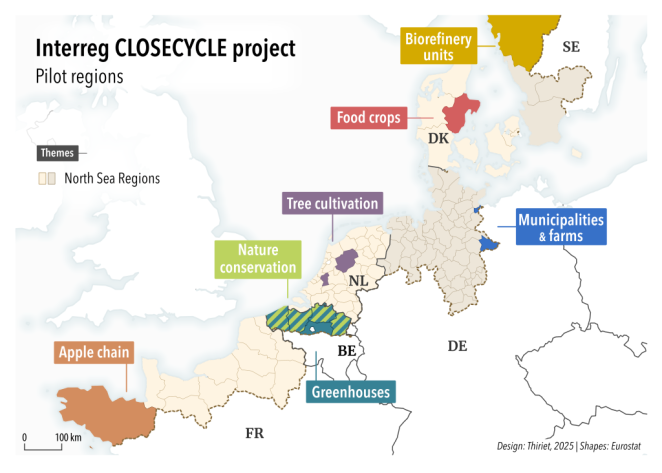
Pilots within 7 themes
A CLOSECYCLE theme refers to the specific area of focus within CLOSECYCLE, where regional material cycles can be closed by using residue based bioresources to create valuable products. The themes are selected, based on their high untapped potential and capacity for transformation at the regional level.
Each theme highlights practical opportunities to generate environmental, economic and societal benefits. Focus is on circular solutions tailored to local needs and resource.

Apple Chain
Regions often have distinct agricultural or industrial activities that generate large amounts of specific bioresources, offering strong potential to close cycles regionally. The “apple chain” for example, is a key theme in Brittany, due to the region’s significant apple and cider production. Apples are also the second most widely grown fruit in Europe and worldwide. This makes the valorization of their residues particularly important. While many apples are consumed fresh, others are processed into juice, concentrates, or cider. The respective industries produce large volumes of residue-based bioresources with potential to make products. In the cider industry for example, apple pomace, which makes up 25–30% of the raw fruit, is currently often used to make biogas, compost, or pectin. Apple tree prunings, however, remain largely untapped. Both residue types contain high levels of polyphenols. These antioxidants are valuable ingredients for food and non-food applications such as cosmetics. Exploring multi-product uses, including those of specific value-added products, greatly supports circularity. Here the link towards the showcases:
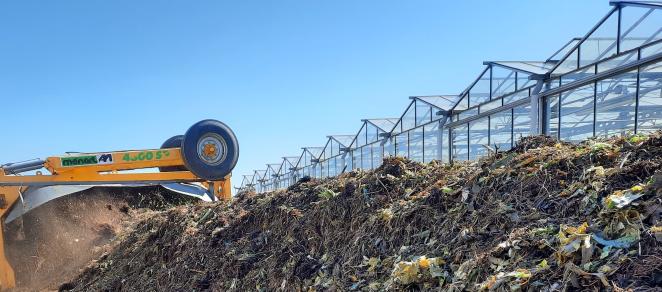
Greenhouses
Greenhouses create controlled environments that enable year-round cultivation of fruit, vegetable, and ornamental plants, independent of external weather conditions. This boosts yields and protects crops from pests and diseases. However, greenhouse production also generates plant residues, for example stems, leaves, and roots. They hold a significant potential for circular use, e.g. by composting, but currently are underutilized. A key challenge is their frequent contamination with plastics. Clips and wires made from non-biodegradable materials are often used to support plants in their growing phase, but lead to the need of disposal by incineration of the entire residual bioresources afterwards. Using compostable materials would enable these residues to be used and transformed into valuable products such as composts. Another bottleneck is the seasonal availability of the greenhouse residues. Most accumulate in autumn when cultivation ends. Storage and conservation technologies are required to allow gradual composting. The “Greenhouse theme” explores these challenges to enable the valorizing of greenhouse residues in a circular way. Here the link towards the showcases:
Composting residual wastestreams from glasshouse cultivation
Storagestorage-of-greenhouse-foliage-with-biodegradable-materials
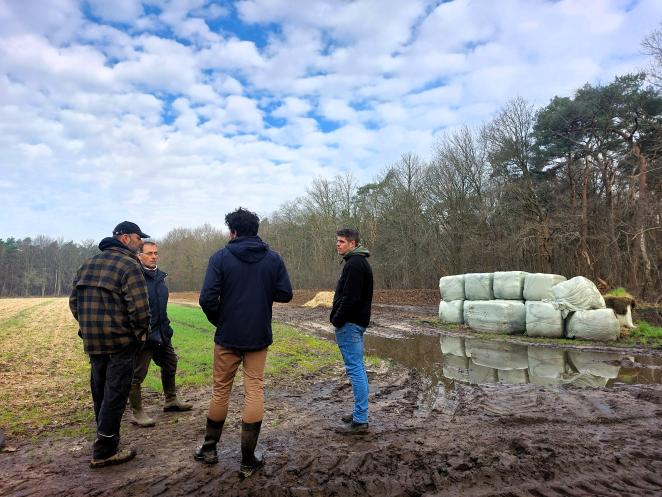
Nature conservation
Within the “Nature Conservation” theme, residual materials from nature reserves are connected to agriculture. Nature conservation residues such as meadow clippings and tree cuttings are produced on a large scale in reserves and cannot be handled directly on site. By using them in agriculture together with agricultural substrates, they can be repurposed. The suggested approach is composting, whereas high-quality compost for use at farms can be generated. There, compost can improve soil health, and reduce reliance on chemical fertilizers. Such cooperation between farmers and nature managers creates a win-win situation. The co-recycling of nature conservation residues into composts cuts emissions, enhances biodiversity, and supports carbon sequestration, contributing not only to climate resilience, but to overall ecological and economic sustainability. Engagement with policymakers is important too. There is often still a need for clear regulations, to ensure that composting of conservation residues is legally supported. This multi-link approach supports closing cycles between nature and agriculture, ensuring long-term environmental and agricultural benefits. See here the link towards the four showcases:
Composting of nature management cuttings in Gulke Putten (B)
Composting of nature management cuttings with grass clippings
Composting of nature management cuttings with public green waste
Composting of nature management cuttings with public green waste 2
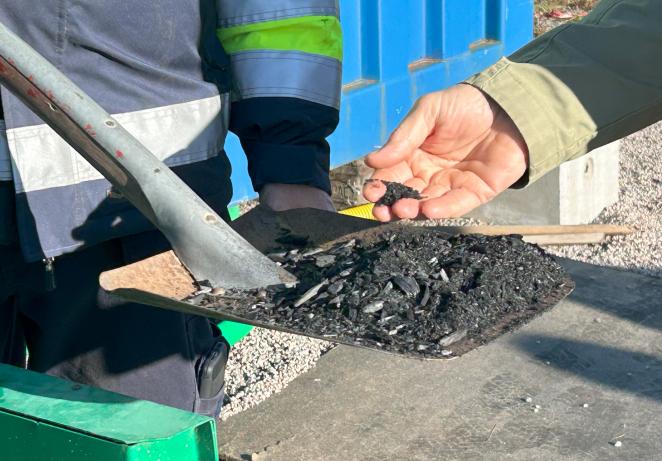
Biorefinery modules
Farm-based biorefineries are important for closing resource cycles at the regional level. Such systems combine multiple technical units, the “Biorefinery Modules”, which transform secondary farm bioresources into a range of products. Promising examples for such modules are green biorefining, biogas production, and biochar generation. This allows farmers to produce sustainable local protein feed for their animals, while also generating energy and products which act as a carbon sink to reduce climate impacts. Biogas production from the biorefinery’s residual streams ensures that all resources are used efficiently. The digestate left after biogas production is a valuable organic fertilizer, which reduces the need for artificial fertilizers. At the same time, biochar can be used in agriculture as feed additive, as soil improver or as peat substitute in plant substrates. By using such integrated solutions, farmers become more self-sufficient and less dependent on external inputs such as fertilizers, additives and energy. This strengthens both the farm’s economy and the environment. Supporting farm-based biorefineries is a key step towards more sustainable and circular agriculture. See here the link towards the showcases:
Farm-based biogas production and upgrade
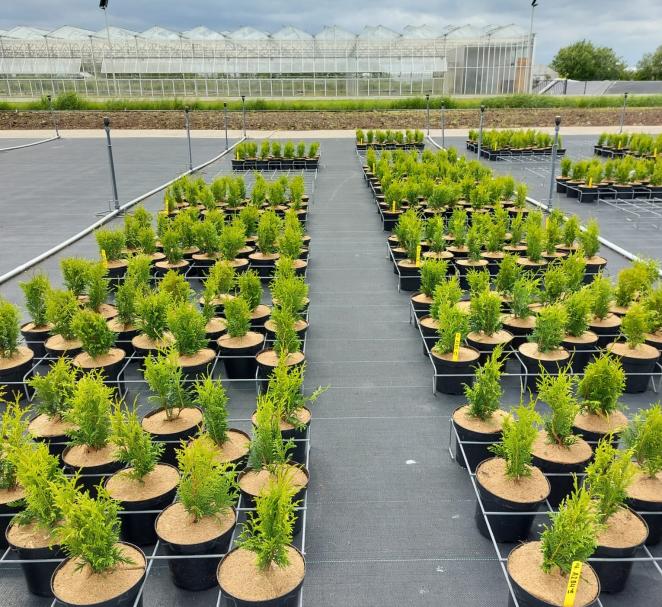
Treecultivation
Trees contribute to carbon capture, biodiversity, climate resilience and human wellbeing. Therefore, the cultivation of trees is vital in creating and maintaining forests, urban areas, landscaped environments, and private gardens. Trees seedlings are raised in tree nurseries in pots, containers, or open fields, and the tree crops are later planted at the final destinations. Growing substrates are crucial for both nursery cultivation and final planting. They serve as a source of nutrients and peat-replacing organic matter. A challenge lies in developing substrates based on locally available residues. Potential additives of a substrate mixture can include for example defibred miscanthus, dried cow manure, biochar and compost. Using underutilized regional residues such as dredged ditch material in Boskoop or soil coming available from new residential areas in Flevoland deserves special attention as a source in the specific regions. To create effective substrate mixes with local circular materials helps to promote local circular flows while supporting regional markets.
Testing local potting soils-Boskoop area
Valuable organic wastestreams for growers

Municipalities and farms
Links between “Municipalities and Farms” play a key role in creating sustainable regional systems. Municipalities generate biowaste, such as food and green waste. They can provide plant nutrients like nitrogen and phosphorus for farms. In return, farms supply food to citizens and municipalities. The farms benefit from locally sourced fertilisers and soil improvers. This reduces their dependence on inputs from abroad. It reduces as well their carbon footprint - more and more companies have to be transparent about their CO2 footprint as part of their certification schemes. Additionally, municipal biowaste, processed into products such as compost and soil improvers, can play an important role in water and carbon retention. Enhancing soil health, mitigation of the impact of climate change and resulting in stable harvests. Residue-based bioresources from both sectors can also support renewable energy self-sufficiency of regions. Biogas produced from municipal and farm bioresources can be stored easily and converted into products such as heat and electricity for personal use and/or supplied into the public grid. Closing bioresource loops between municipalities and farms, improves regional sustainability and resilience, strengthening food, material, and energy systems.
Food crops
Food crop production is essential for ensuring food security, providing the calories and nutrients needed to sustain human life. However, the growth of food crops is connected with a demand on plant nutrients and plant protection against pests. Especially the vegetable production is often very intensive and can contribute to declining soil health and faulty harvests if growth conditions were sub-optimal. There is a need to link crop plants demands for good yields with their provision by regional available biosources and their products. These includes e.g. the recycling of anaerobic digestates, composts, and even insect frass. Although large volumes of suitable, local bioresources are principally available, their current use in food crop systems is limited. Often due to complex regulatory hurdles, varying residue and product properties, and uncertainties about their effects on yields and crop quality. The “Food crops” theme addresses such issues and supports the closing of nutrient cycles at regional levels, while simultaneously reducing waste, and restoring soil health. It overall contributes to creating a more sustainable food system.
See here the showcase: